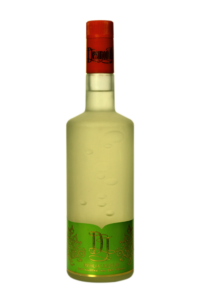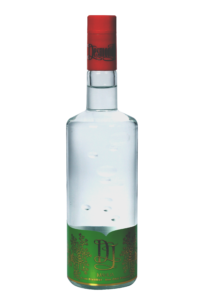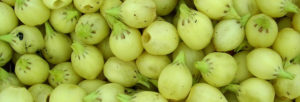Mahua, The Traditional Tribal Drink from India, Enters the Mainstream
The US has Bourbon, Mexico has Tequila and Mezcal, Scotland has Scotch, Brazil has Cachaça, and the list goes on and on. But what about India? It’s among the top five alcohol consuming countries in the world and there is a robust spirits/whisky manufacturing industry. Colonial India invented the gin and tonic, but has had no serious candidate for national liquor, until now.
This is the story of the emergence of a national drink, led by one man’s innovativeness and tenacity. An alcohol product with a long history and exclusively Indian heritage, surrounded by legends, and spanning centuries. A historic product from the many tribes in the Central Indian Forest belt.
The products (there are two) are called DJ Mahua and DJ Mahua Liqueur. The man is Desmond Nazareth and we have met him before in this blog. (You will find them here, here, and here.)
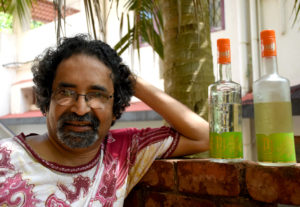
The Product
Mahua (pr. Ma-hu-a) is a flower that Indian tribes have been fermenting, distilling, and drinking. The Mahua tree has been considered sacred for centuries. Desmond and his Agave India Company have begun marketing the product under the DJ (DesmondJi) brand in liquor and liqueur formats and selling these products as Indian Made Liquor (IML) since June of this year. But his real challenge is to get the widespread liquor authorities to recognize Mahua as an official, potentially national drink.
Here’s how he describes Mahua:
“Mahua is a nectar rich flower of the Madhuca longifolia tree, which grows in the Central Indian Forest belt, historically inhabited by indigenous people of India, so called ‘Adivasis’, or ‘Tribals’. The nectar rich flowers mature and drop for a month or so in the Mar-April-May timeframe. These edible sundried flowers retain a significant part of their sugars, with a pleasant, complex taste akin to a hybrid of sun-dried raisin, fig and date… For centuries, Central Indian tribes have been collecting and storing Mahua flowers, and consuming single distilled Mahua spirit made from the flowers in traditional clay, wood-fired potstills.”
He depicts the products as “forest-to-bottle” and both are 40% Alcohol by Volume (AbV). The DJ Mahua liqueur is blended with honey and spices and there are plans for a DJ sparkling product. I’ve tried both the liquor and liqueur and found them to be very enjoyable products, with unique and pleasant tastes. The DJ Mahua Liqueur product in particular, was most enjoyable both straight and in cocktails.
Desmond describes Mahua as “the only spirit in the world that is fermented and distilled from naturally sweet flowers.” ‘What about St Germain?” I asked. According to Desmond, St Germain is made by macerating and steeping Elder Flower in alcohol; DJ Mahua is naturally fermented and distilled directly.
The Mahua Mystique
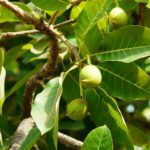
What fascinates me about Mahua is its colorful history. Spend a few minutes here and you’ll see what I mean.
As legend has it, Mahua is “An indigenous drink rumored to be the elixir of the Gods and the weakness of deities, the tribals tell tales of how it is coveted by deer, birds, and humans alike.”
According to Desmond, Mahua is more than a drink, it’s a reflection of India’s colorful tribal history. The legends and stories abound with tales of hard-working villagers saved from the messengers of death by Mahua; of animals cavorting while tipsy on the flowers. Desmond writes:
“From bark to fruit, leaf to root, every part of the Madhuca Longifolia (botanical name) earmarks our heritage in a way few other elements of our long cultural history do.”
A well-respected English anthropologist working with tribes in Central India named Felix Padel, a descendent of Charles Darwin, tasted Mahua and was surprised that the government did not develop it as an industry. He is quoted as saying, “I wonder why people in India would prefer French wine and English scotch when something fresh and rejuvenating like Mahua is available.”
And that leads us to Desmond Nazareth’s journey to make Mahua the Indian national drink.
The Challenges and Obstacles
Mahua is currently made in over a third of India’s 29 states and getting Mahua recognized all over India is a daunting task, particularly when you’re a niche, craft distiller with limited resources.
The Indian alcohol market is very complex and, to me at least, somewhat confusing. As I mentioned, its alcohol volume consumption is among the highest in the world but its per capita consumption is low. There is a love-hate relationship with alcohol, dating back to Gandhi’s aversion to it and at least four states and one territory practice prohibition. Yet, Indians love to drink and the worldwide cocktail enthusiasm is alive and well in the major cities.
Indian Made Liquor (IML) consists of two types. One is Indian Made Foreign Liquor (IMFL) and is the official term used by governments, businesses and media in India to refer to all types of liquor manufactured in the country other than indigenous alcoholic beverages. The other type is Country products such as Feni and Mahua.
Desmond is trying to get a new Excise category established countrywide. It would be known as Heritage alcohol products and strictly governed by international standards. It would be taxed lower than ‘IMFL/IML’ and higher than ‘Country’. He feels that this would encourage entrepreneurs to explore and exploit the huge treasure trove of Indian alcoholic beverages.
To get Mahua recognized as a national drink means a state by state campaign since there is no central national regulatory body equivalent to the USA’s TTB. “It is a crying shame that there currently is no simple Excise/ Revenue/ Customs mechanism for proudly made in India alcoholic beverages to be placed in Travel Retail (Duty Free) outlets in India,” says Desmond.
Nevertheless, an important step forward has emerged, thanks to Desmond’s efforts so far. The Food Safety and Standards Authority of India (FSSAI) is roughly equivalent to the USA’s FDA and is working to standardized the manufacture of Mahua and the use of its ingredients.
What’s Next?
As you read this, know that Desmond is hard at work on a number of levels. The manufacture and sale of DJ Mahua and DJ Mahua Liqueur in his home state of Goa and elsewhere in India; working on a sparkling Mahua product; and pushing for recognition as a national drink.
My own view of this situation is that it represents a unique and powerful opportunity for a global player to enter the fray. The “size of prize” of the Indian market and overcoming the obstacles for global brands, suggests that the Diageos, Pernods, and others might want to take a close look at Mahua. I think it represents a real opportunity to participate in the development of a new national brand with Indian and global potential. (If I were still at Seagram, I’d be doing just that.)
For a brand to succeed on the global stage, it needs to be good tasting, backed by an entrepreneurial effort, and a have compelling story. DJ Mahua and its variants has all that and more.
It’s time for the product to come out of the woods and reflect its heritage the same way as bourbon, scotch, tequila, and all the other national drinks. I hope that the Indian authorities would grant a type of AOC (protected designation of origin) or Geographic Indication (GI) for Mahua along the same lines as those for cognac, tequila, champagne, and others.
